Urban Camo Seed Bombs - Oakland
Papier maché seed bombs painted to resemble common street litter - an ongoing guerrilla art project by Kasey Smith.
In East Oakland, urban space is simultaneously expansive and isolated. Lacking the motivation to grow upwards, everything spreads and languishes along the horizontal axis. Houses are cushioned by yards, businesses are cushioned by parking lots, and the streets are cushioned by tree wells. Which is not to say that all of it counts as well utilized urban space. Sure, there’s a great feel of openness and breathability to this part of Oakland; but the cost of maintaining that open, urban space expands exponentially with the size of the space in question. Relatively wealthy San Francisco cannot properly maintain a single tree well, yet East Oakland is expected to maintain tree wells, empty lots, small parks, and the yards of foreclosed homes. Realistically, the city’s hierarchy of needs is focused elsewhere, and the sprawl of dis/misuse continues unabated.
“City coffers fall apart; the tax base cannot hold; Mere neglect is loosed upon public space.”
So how did I get from East Oakland-has-lots-of-underutilized-open-space to the concept of the Urban Camo Seed Bomb? And what is an Urban Camo Seed Bomb anyway? Simple, when walking through Fruitvale (my neighborhood of 9+ years) I see more illegally dumped sidewalk litter than sidewalk plant-life and that represents a creative opportunity. To combat this under-utilization of green space I created a series of seed bombs painted to look like common trash – the idea being that my “trash” will blend in with the actual trash, dissolve in the rain, and eventually sprout into plants and flowers.
So how are the Urban Camo Seed bombs constructed? The seeds I used are from the California Poppy and were chosen due to their relatively easy germination, their suitability for the region, their showy blossoms, and their status as the official California state flower. The seed bombs themselves are made from recycled paper, water, and flour that’s either pressed into moulds or flattened between bricks and painted using non-toxic water colors.
The below are the first two seed bombs placed in the urban environment – specifically an abandoned tree well on San Leandro Street. I walk by this spot every day and loved the bottle cap mosaics that used to be found here. So much Heineken and Corona but not a single, solitary scrap of greenery! And how did the first placement go? Within 48 hours both bottle caps were gone. Within an additional 24 hours the Corona cap came back but was severally mangled – it’s paint smudged and it’s body crushed. Within another 24 hours it had disappeared again only to reappear once more the following day. It’s almost as if the neighbors were playing a trick, but more likely the seed bomb was getting stuck on shoe bottoms and tracked around the block.
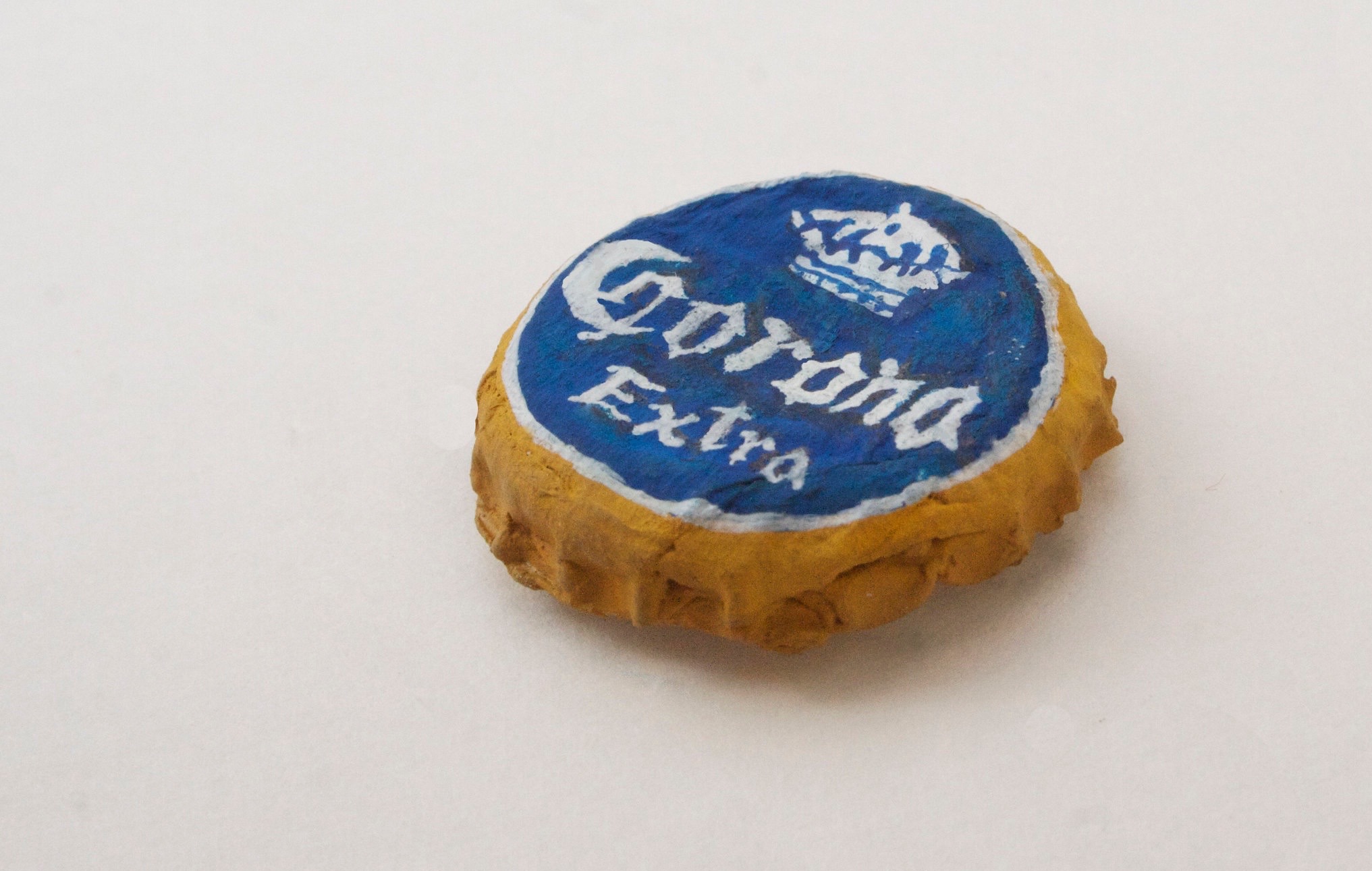
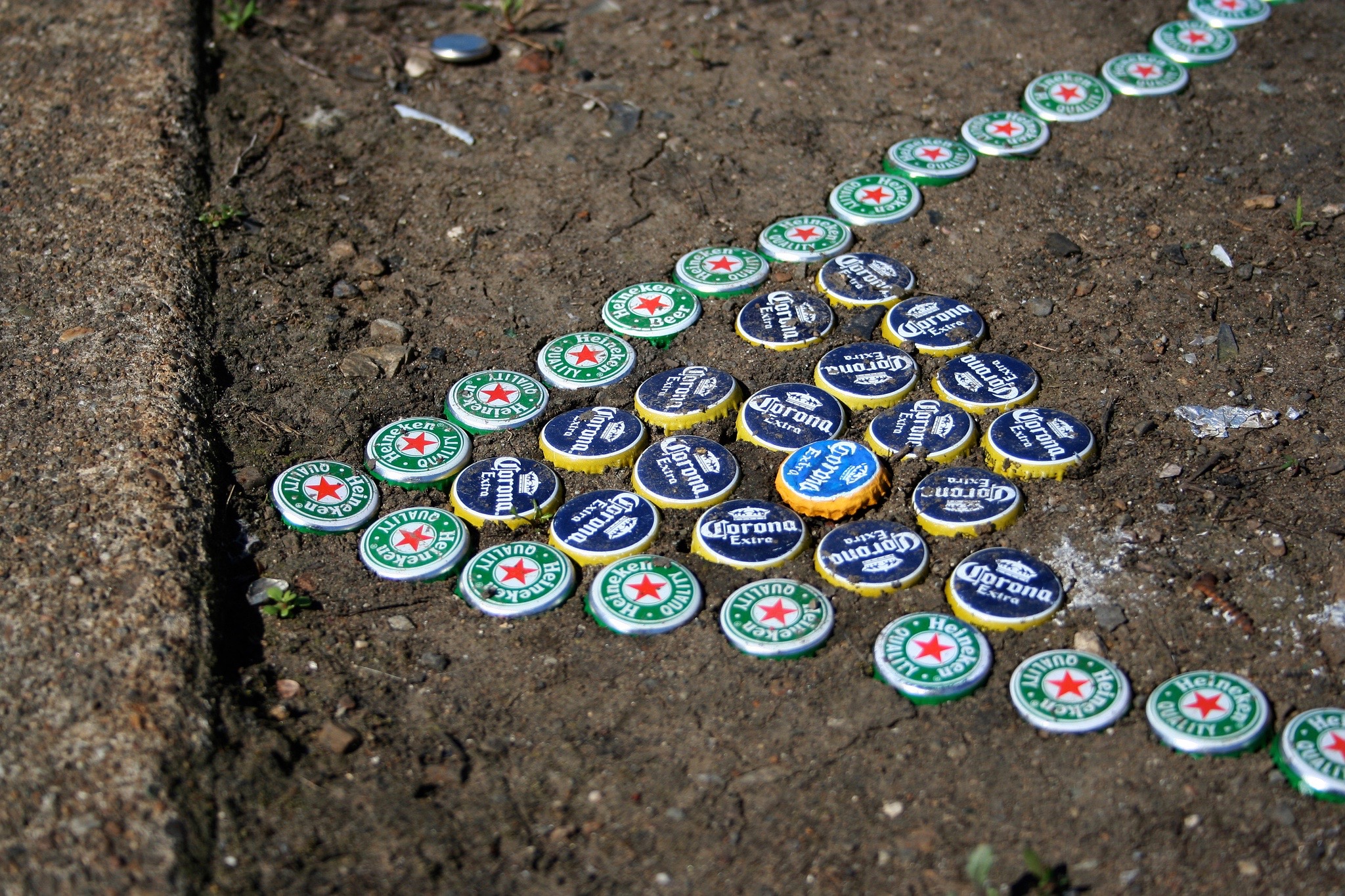


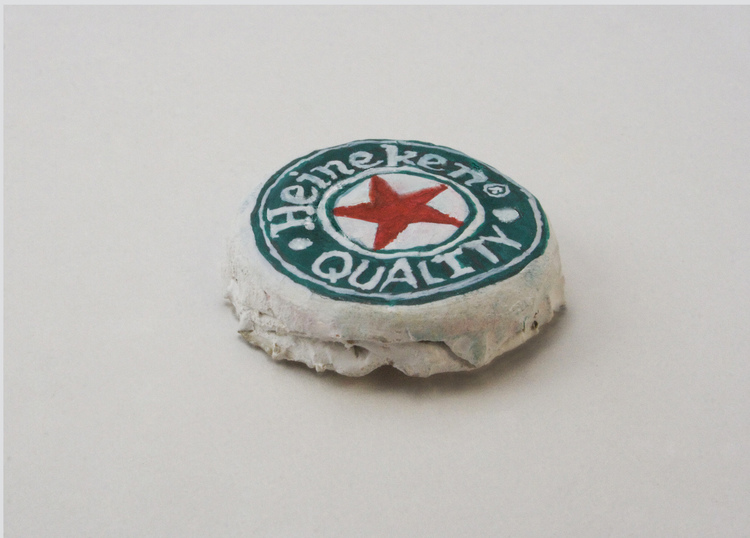
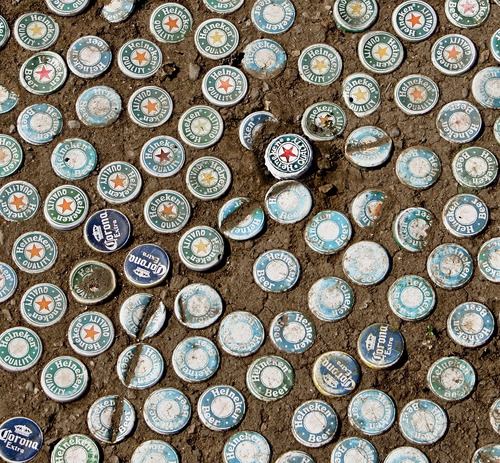
LESSONS LEARNED 1) Bottle caps need to be pressed into the soil, both as camo and as protection from the wind. 2) Bottle caps require more secluded spots; if people see an art they will take it.
The next two Urban Camo Seed Bombs placed in the urban environment disappeared within one week. The Alaska Brewing Company cap is from the disused train tracks at San Leandro and 49th. The Holiday Shiner cap is from the freeway onramp at 40th Avenue and 12th Street. I really wonder where these went. Did my neighbors collect them? Did magpies and crows scoop them up? Did dogs scarf them down? Did the wind blow them beyond my grasp?
The Pyramid Brewing cap placed on the Bay Trail near the High Street Bridge did last a bit longer than the rest. I could still find it after four weeks, but it never fully dissolved in a way compatible with nurturing the seeds inside. I have to assume that bulk was an issue; they ended up being quite dense in a way that may have prevented sprouting.
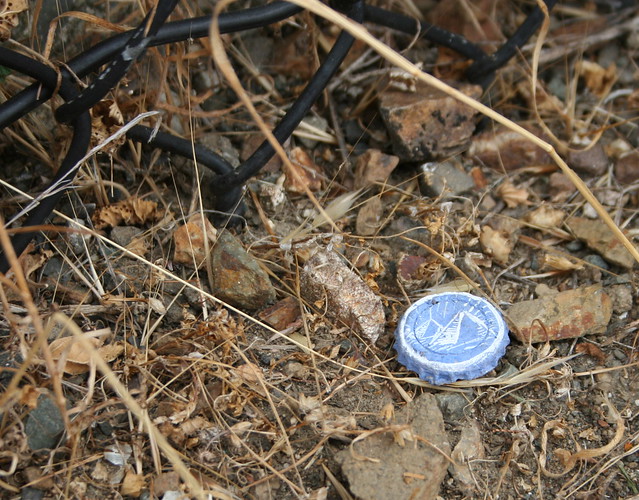
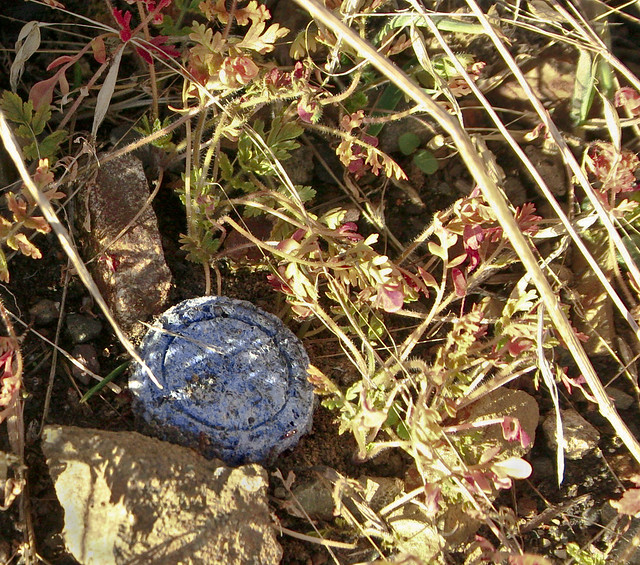
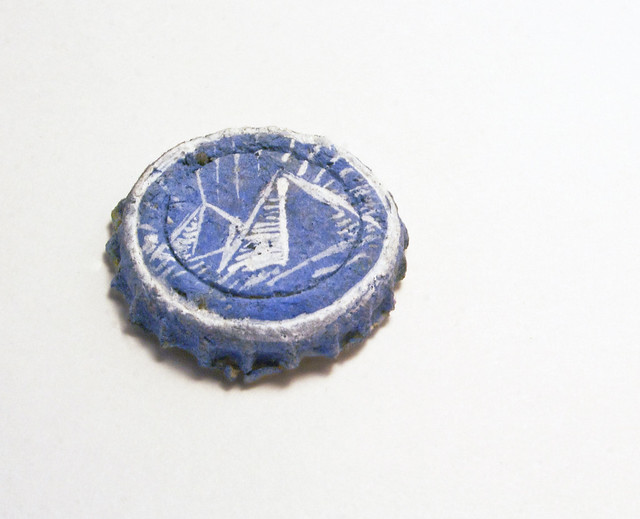
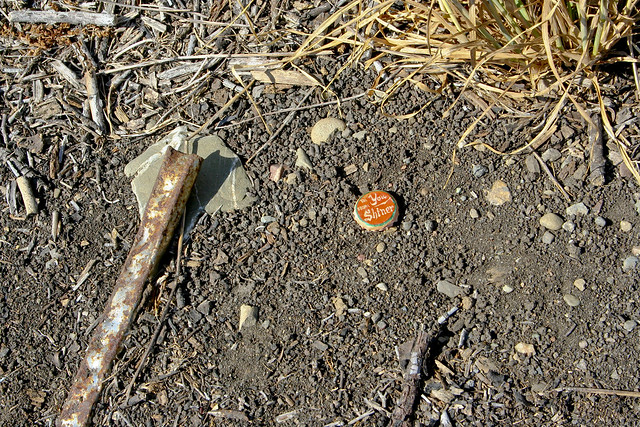
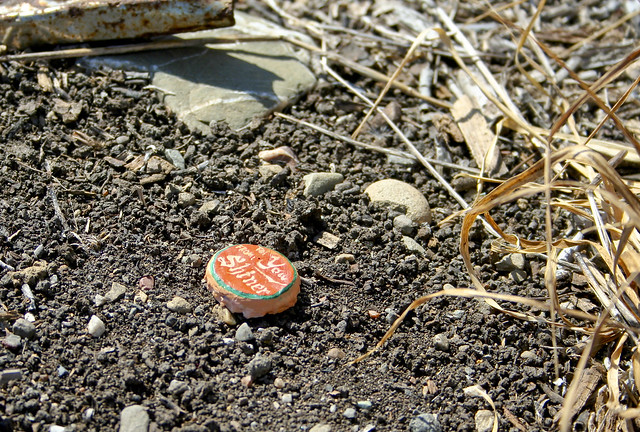
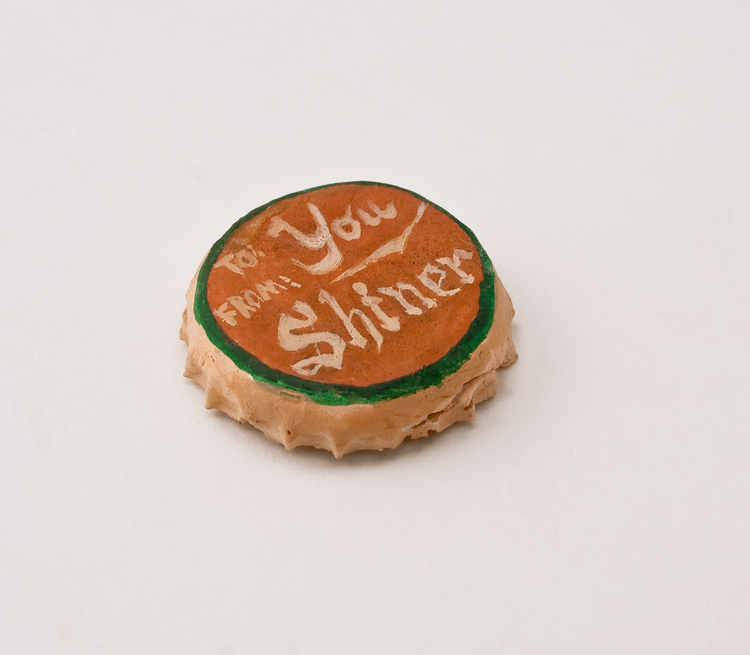
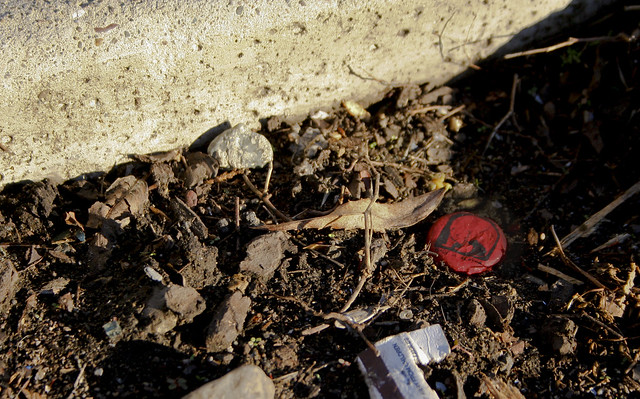
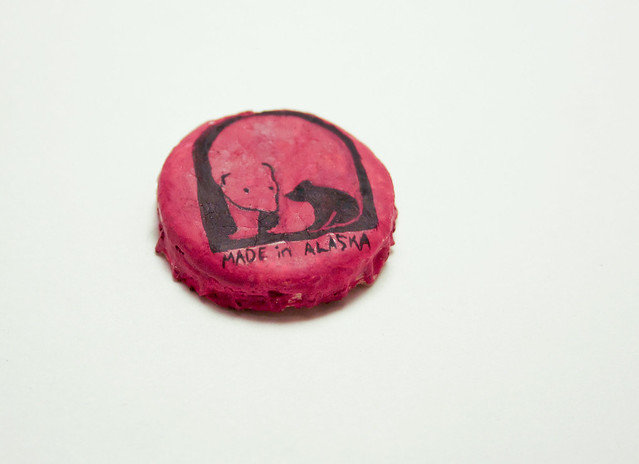
LESSONS LEARNED 1) Urban Camo Seeds Bombs require a light, breathable construction to let moisture in and sprouting seeds out. 2) More discreet placement does extend their lifespan but counts for nothing without the first point.
It was now time for a pivot. Measuring 26mm across, bottle caps are a challenge of scale but with their simplistic logos that challenge exhausts itself quickly. After placing the first five bottle caps I turned my attention to larger packaging with more complicated designs. Three dimensional packaging, packaging with metallic or plastic elements, packaging with elaborate text or graphics. I consider myself an opportunistic painter - I enjoy the medium but approach it as a conceptual tool rather than an expressive outlet; using it sparingly and without loyalty across my portfolio. The demands of creating a photorealistic, to-scale Dot’s box or Skittle’s wrapper was certainly unlike my previous painting challenges.

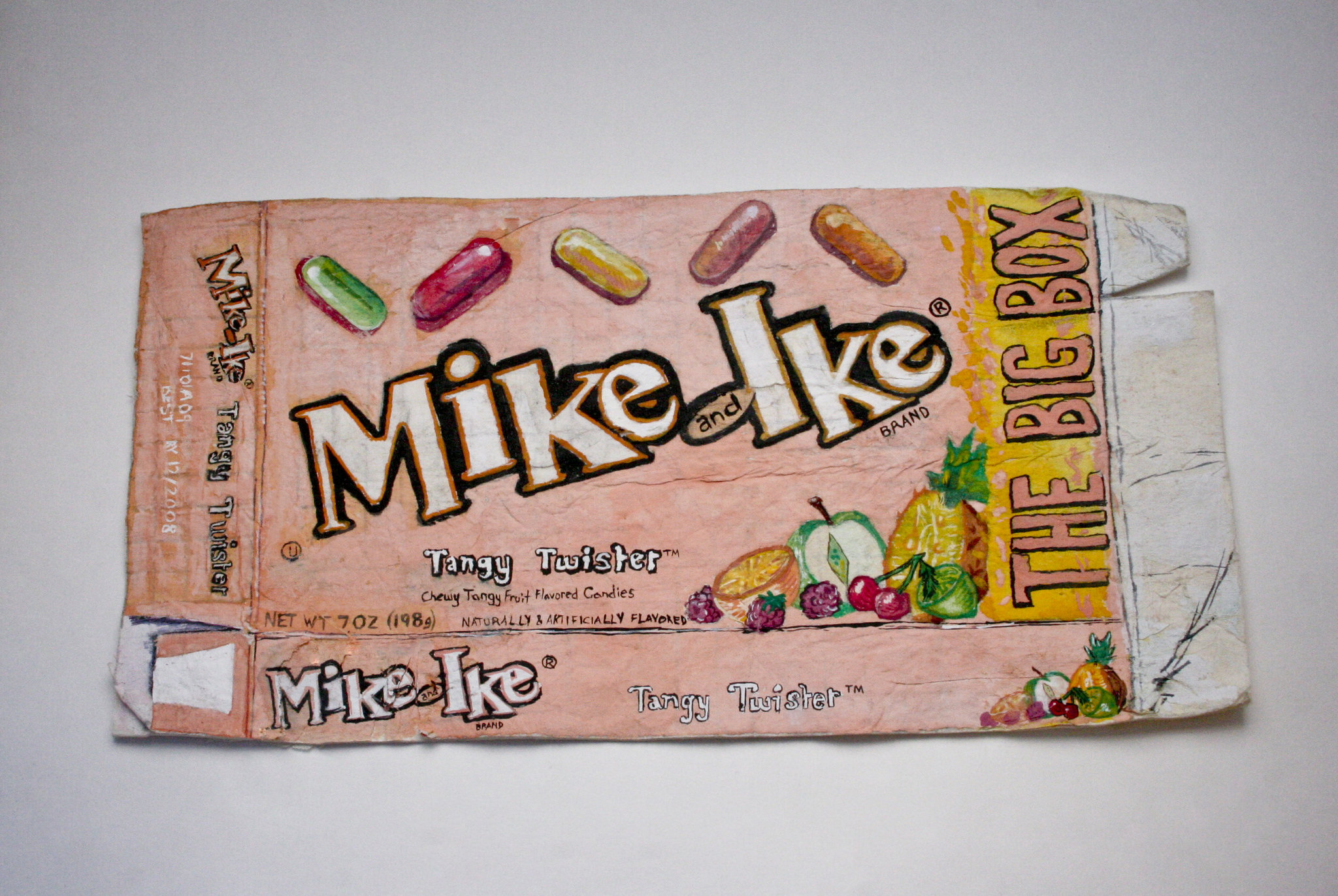
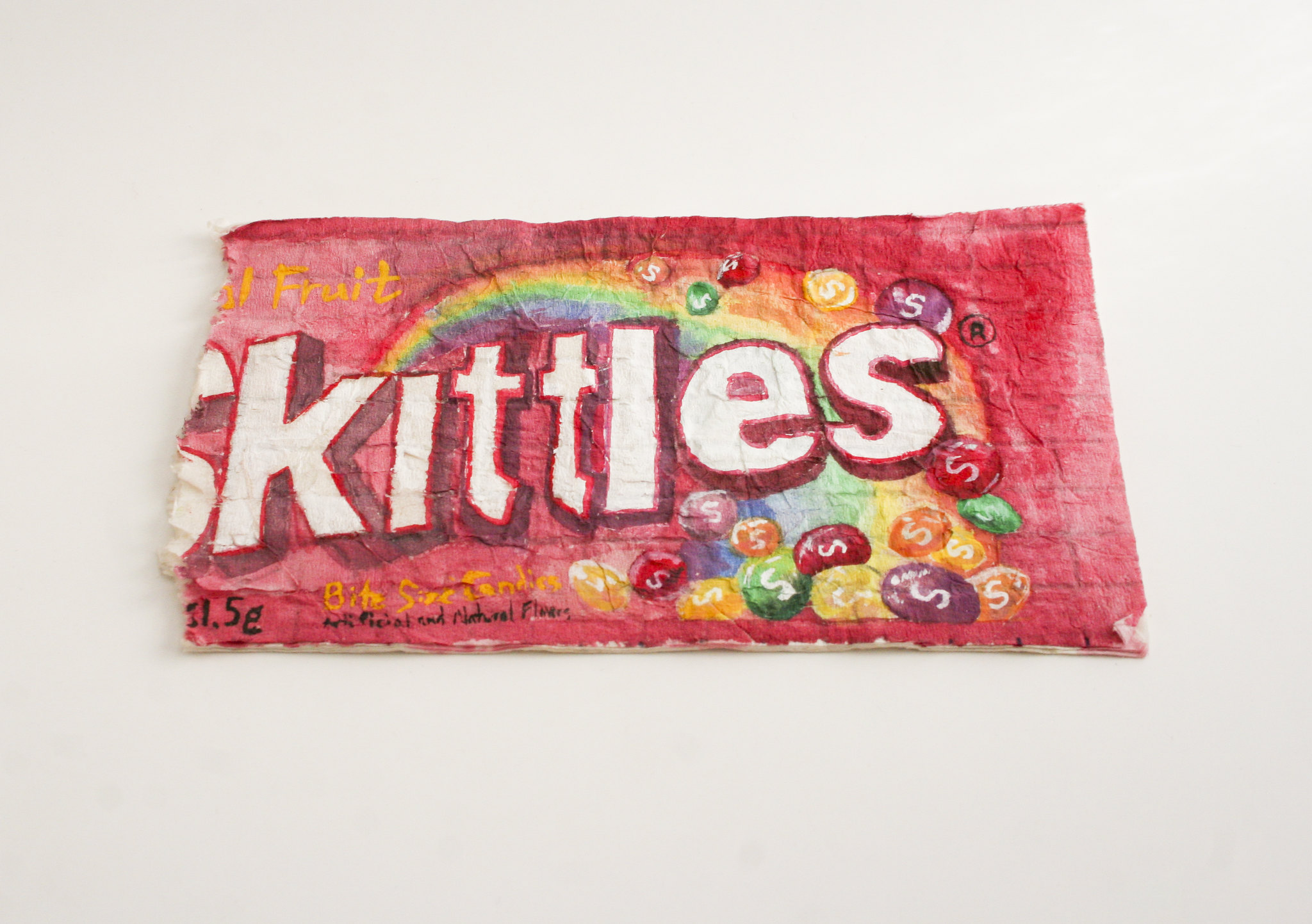
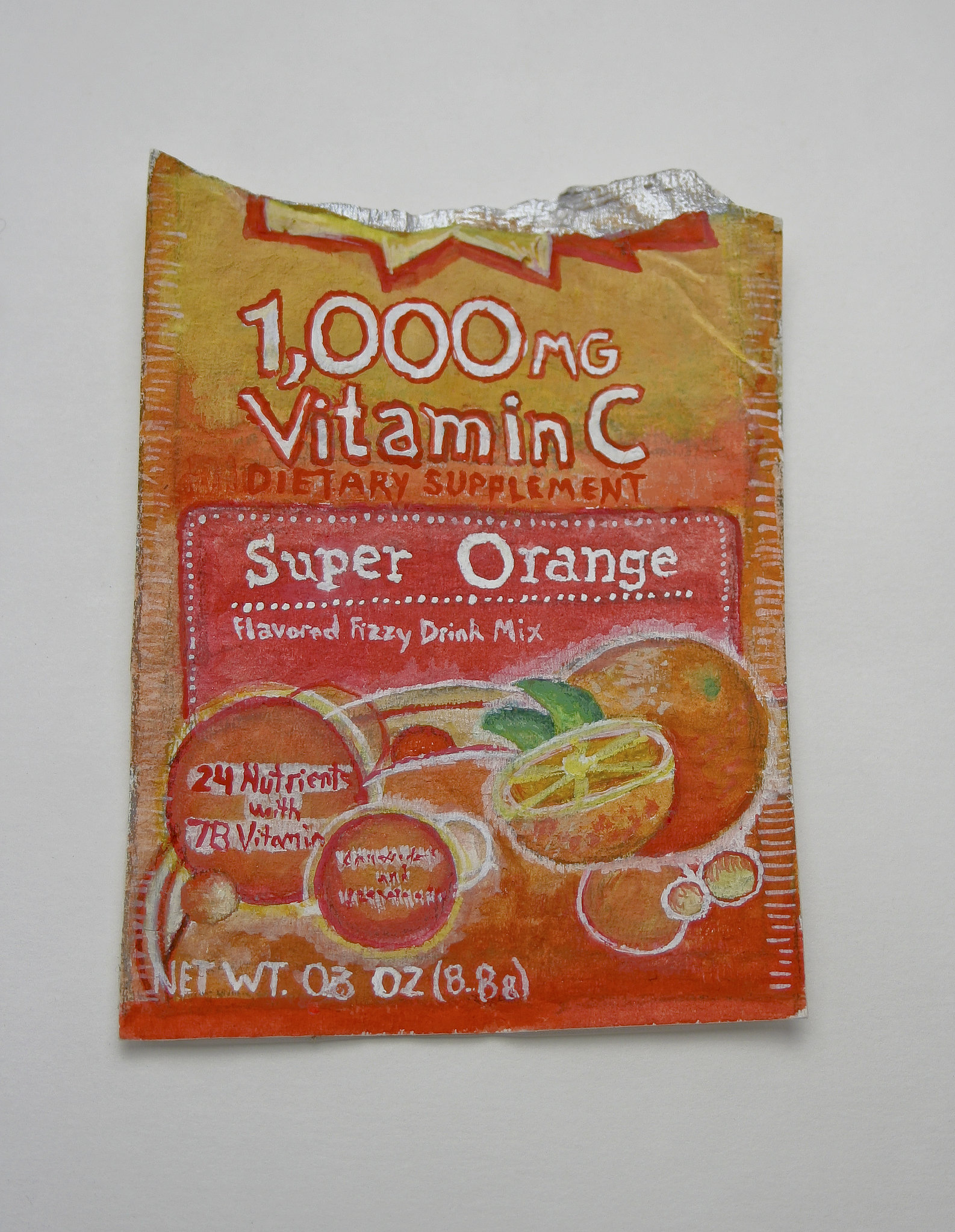
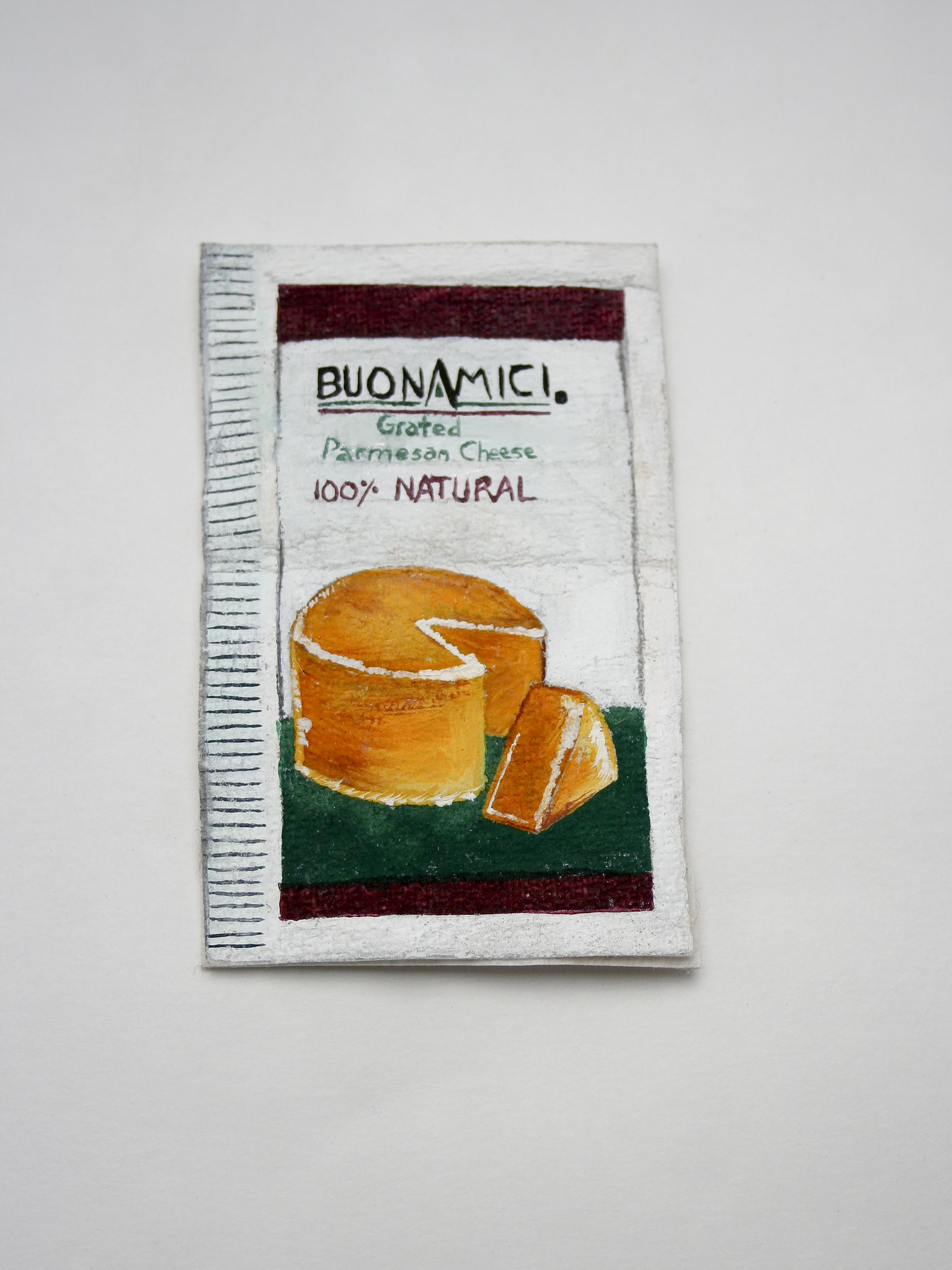
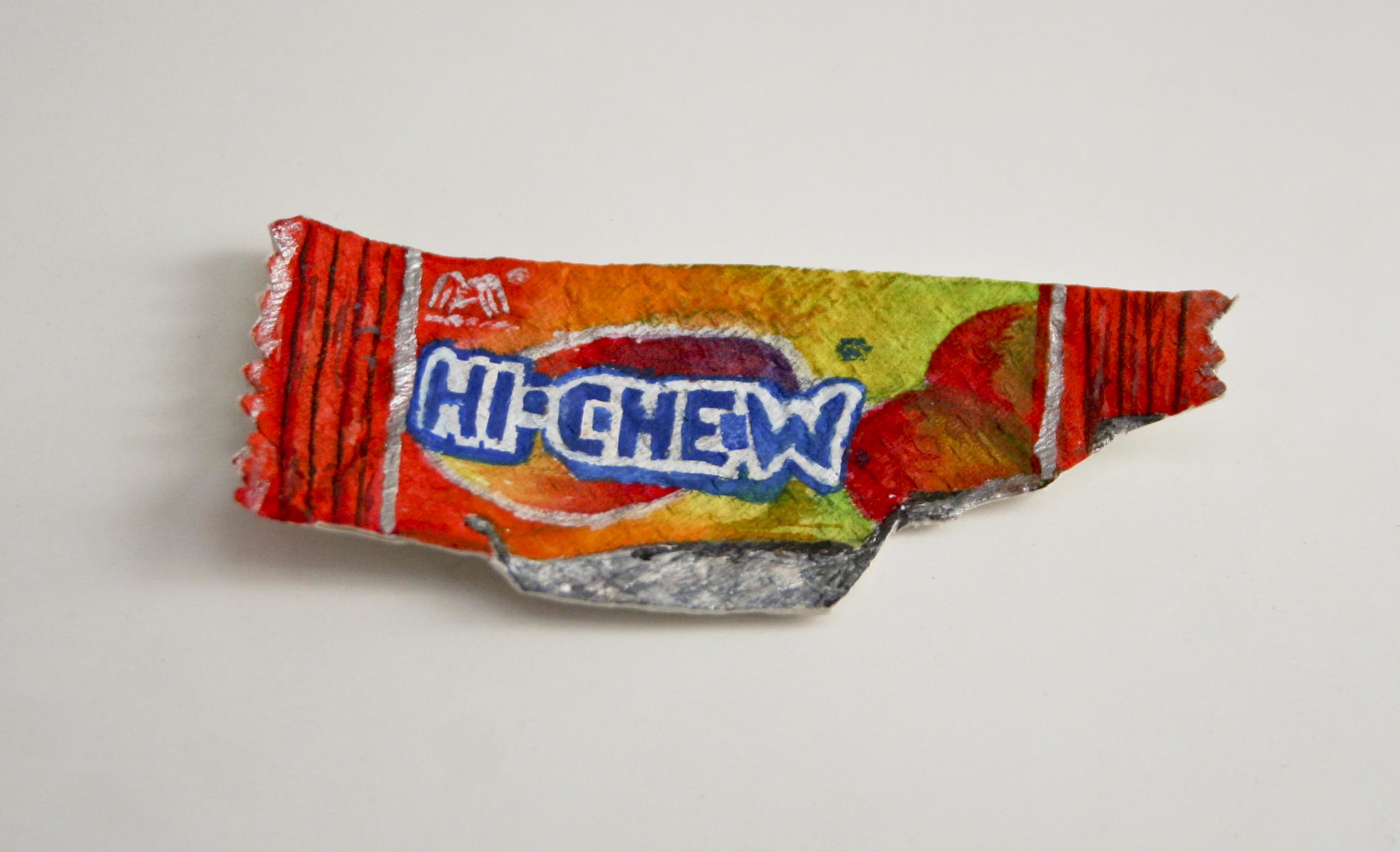
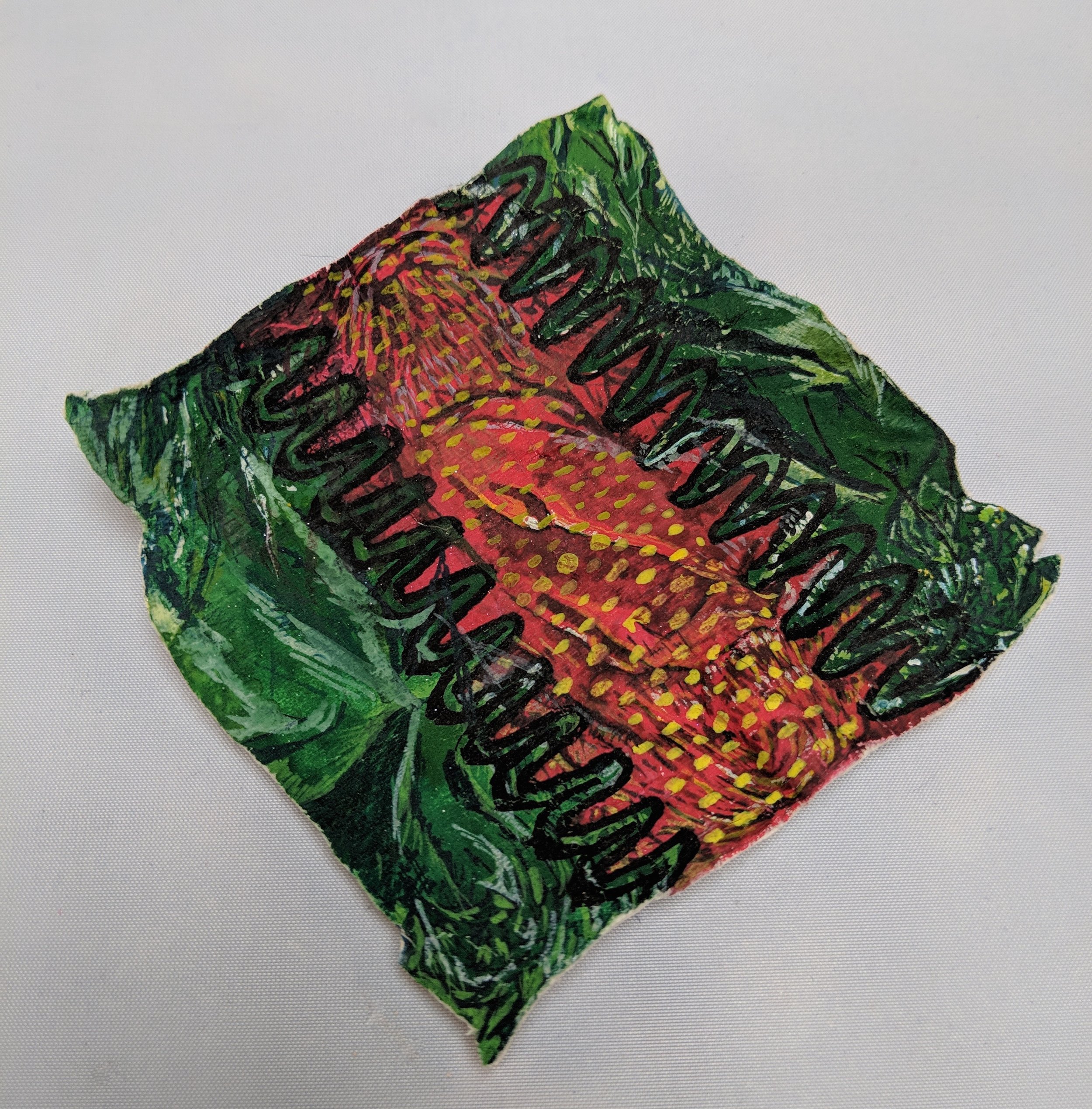
With these paintings, preciousness and possessiveness made an appearance in the studio, staking an ownership claim on these new pieces. They started to feel different and I began to question the series. Did I really want to just throw them out? Maybe the more simple pieces could be left outside and these could be framed and shown in galleries? Wouldn’t it be a shame to see them fade and dissolve? Didn’t the art deserve better?
No.
Placing these was a non-trivial emotional exercise, a foreshadowing of what was to come with the Fauxberge Series. The Mike and Ike box, the Hi Chew, and the Buonamici were placed in quick succession and monitored for months while they dissolved. In the end none sprouted. I held off placing the remainder due to concerns with seed viability and yes, my own hesitancy to relinquish the more elaborate seed bombs to the streets. This ended up being a years-long break before the Dots, Skittles, Strawberry Hard Candy, and remaining bottle caps pieces were placed. (The Emergen-C and One Condom seed bombs are both in private collections.)
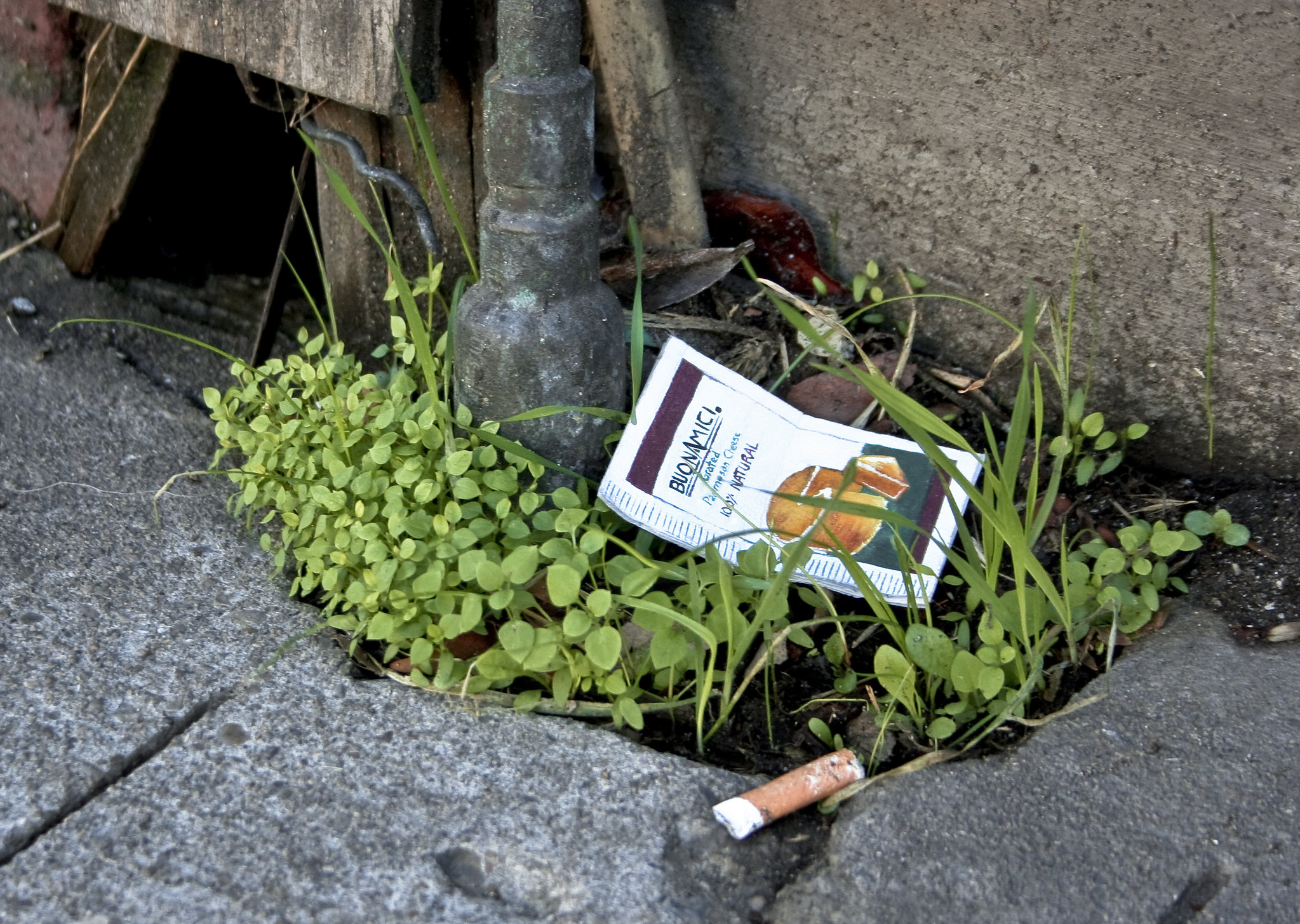
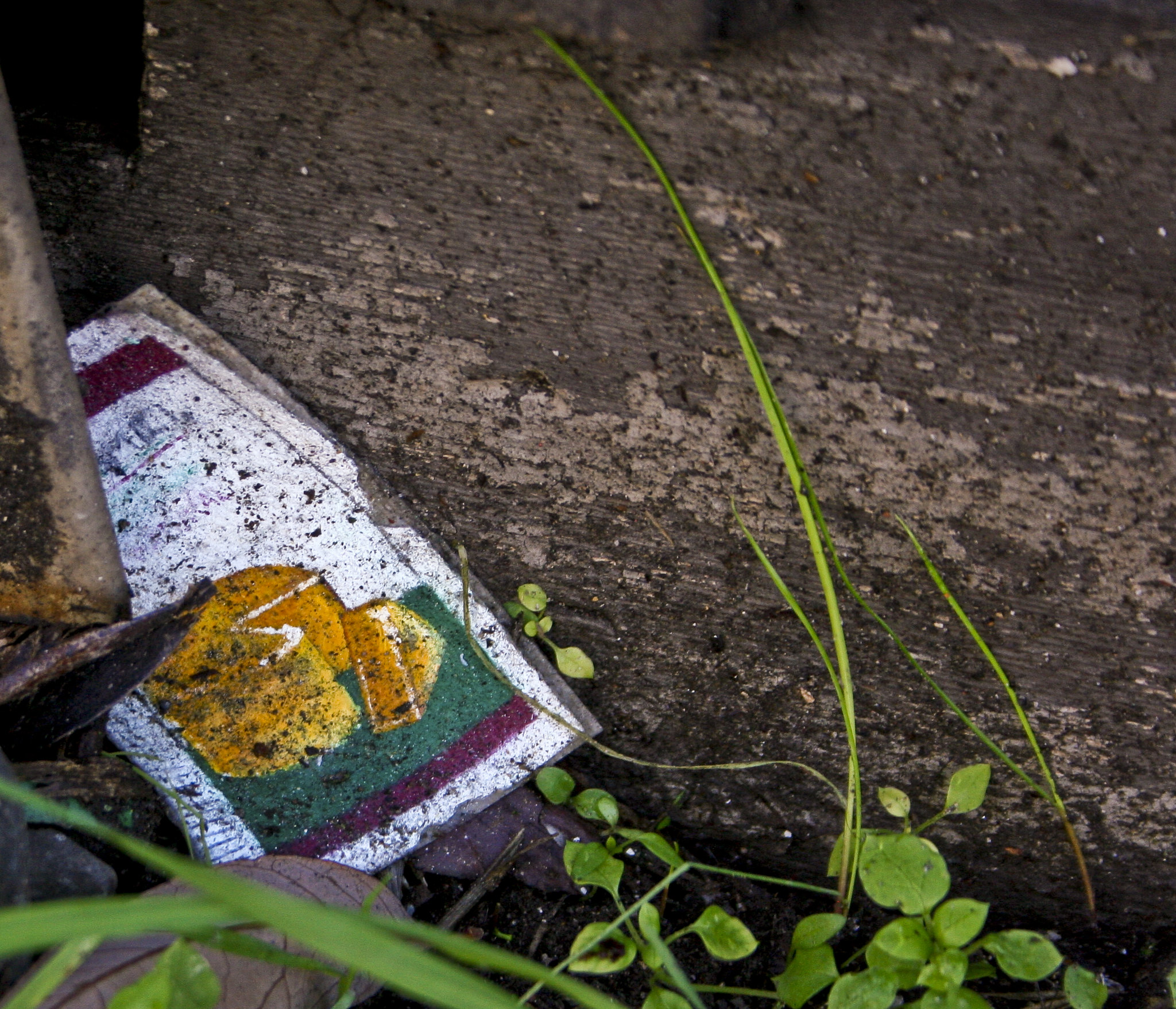
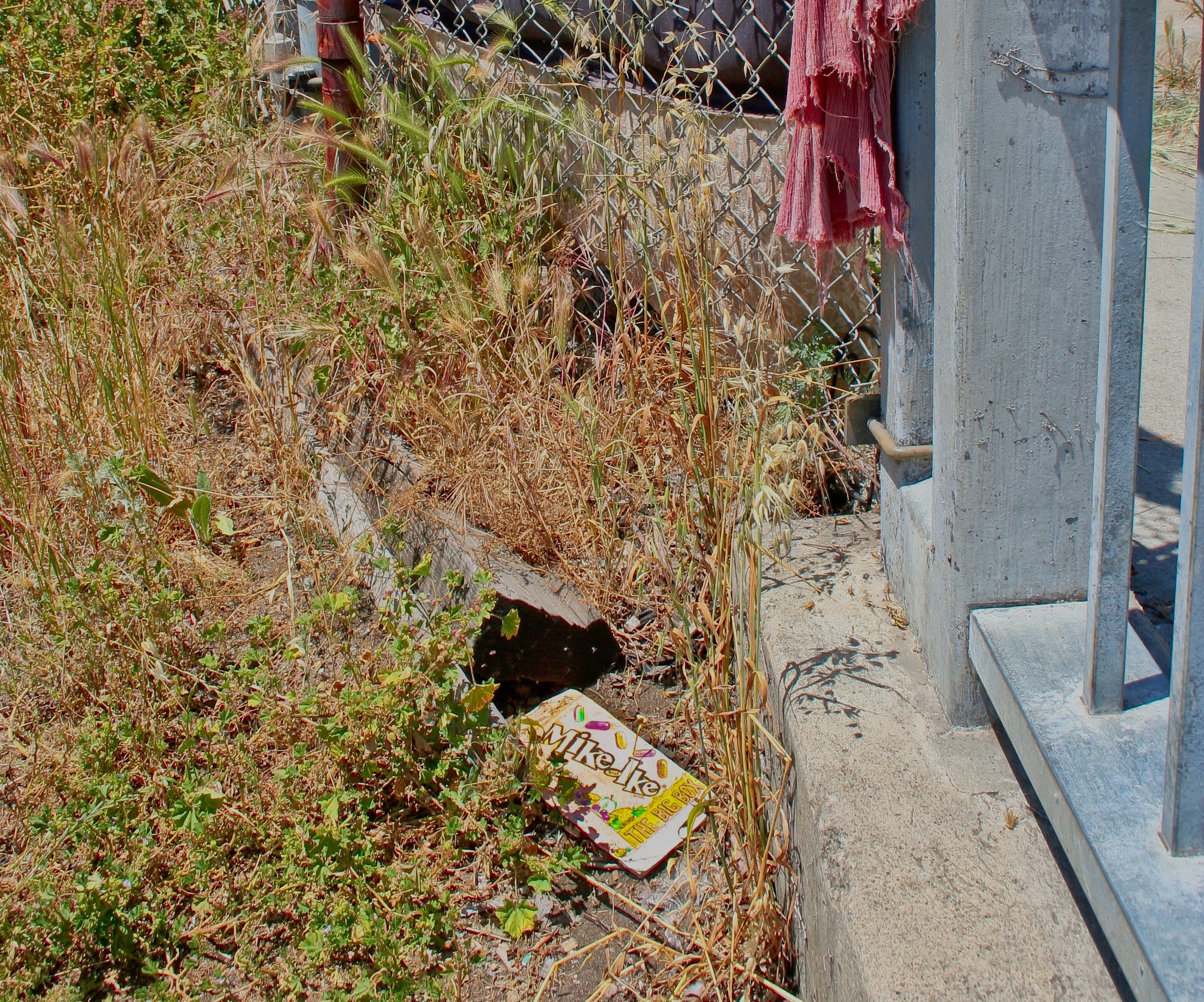
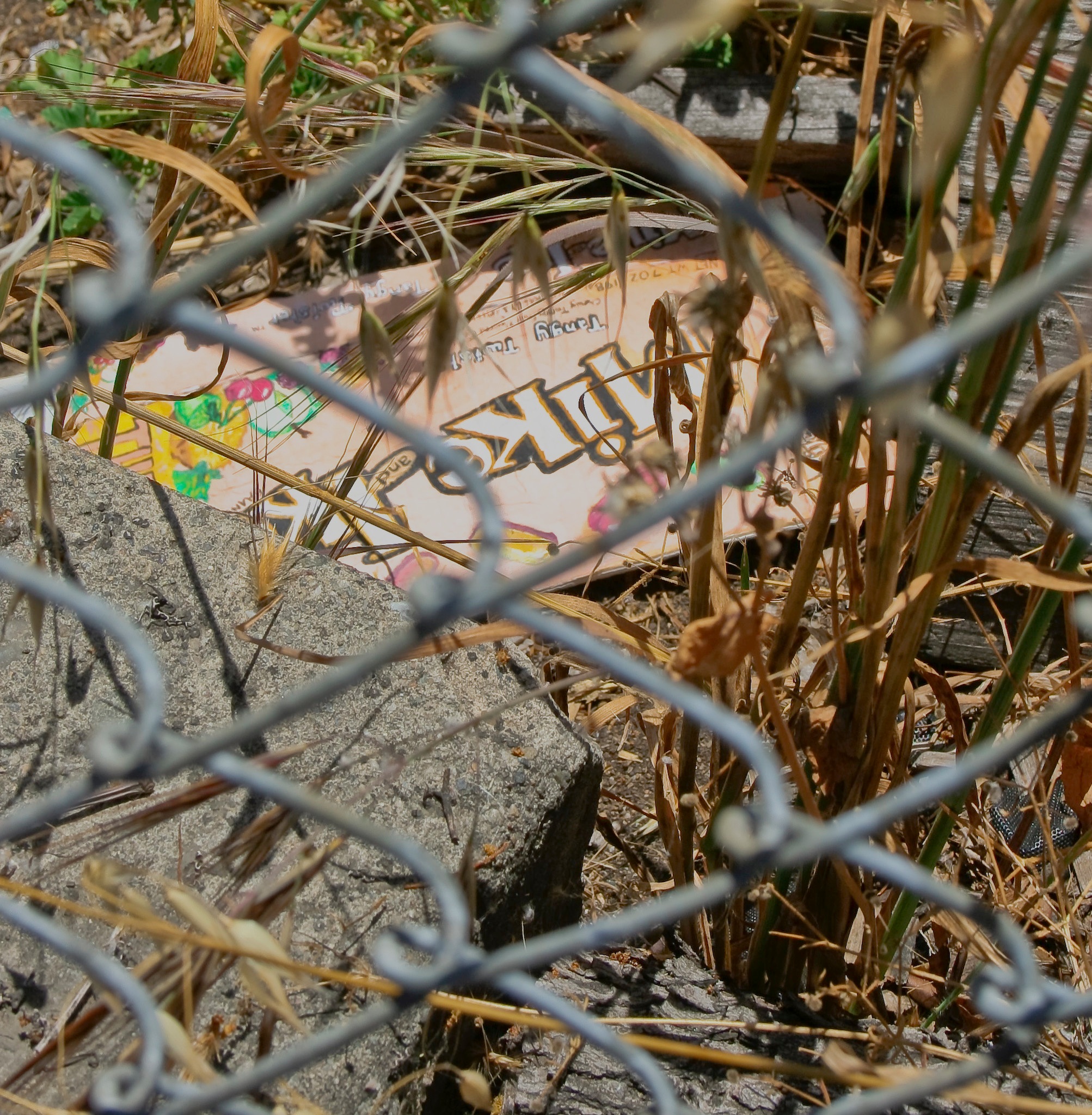
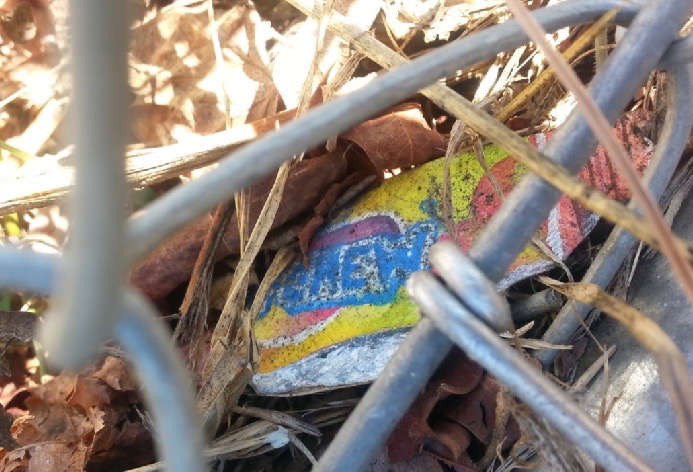
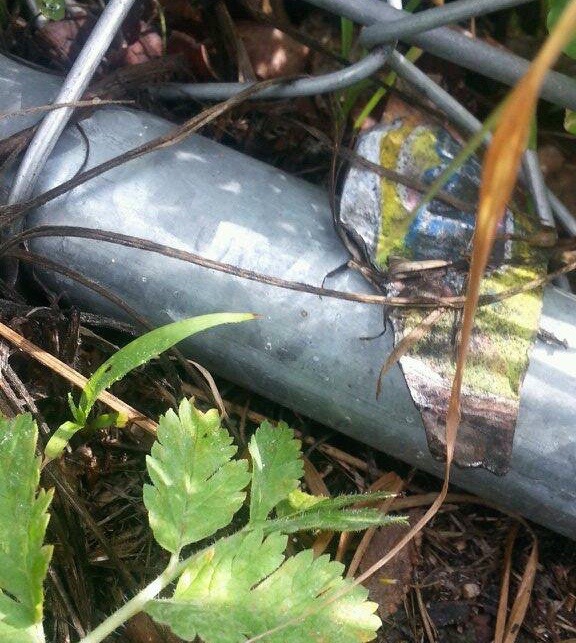
LESSONS LEARNED 1) Art is hard and sometimes it hurts. 2) It’s okay to pause if that hurt becomes too much
Let’s back this inquiry up before discussing the next phase of seed bomb placements. Weeds are evolutionarily predisposed to take advantage of disrupted soil. Think fires, mudslides, glacial retreats or, in the Anthropocene, the wake of human development. You have only to look out the window on the highway to see whole hillsides covered in invasive fennel or pampas grass to know how SPECTACULARLY good at this weeds are. Which brings us to places where they will not grow… There’s possibly a reason. Has the ground been polluted with chemicals or weed killers? Has the top soil been removed or replaced with less fertile, even sterile, subsoil? Is there a lack of essentials like water or fertilizing elements? Is your soil just sun-backed clay with poor drainage and nutrient retention?
While the California poppy is an incredibly fertile and resilient wild flower, it lacks many of the “weedy” characteristics needed to pioneer the most barren of urban spaces. Without fast-draining soil, ample water, and full sun they’re unlikely to grow with abandon. And if weeds are struggling, well, even the hardiest of wild flowers doesn’t really stand a chance.
This is a constant with guerrilla gardening. You make greenery flourish with the space you have, not the space you want. After all, the space you “want” probably isn’t the space that needs it most! After going down a whiteboarding path that included added nutrients to the seed bombs, watering the seed bombs on a schedule, and more, I settled on a newer direction to encourage growth in some of the remaining seed bombs - planting them in the neglected raised beds of local parks and businesses.

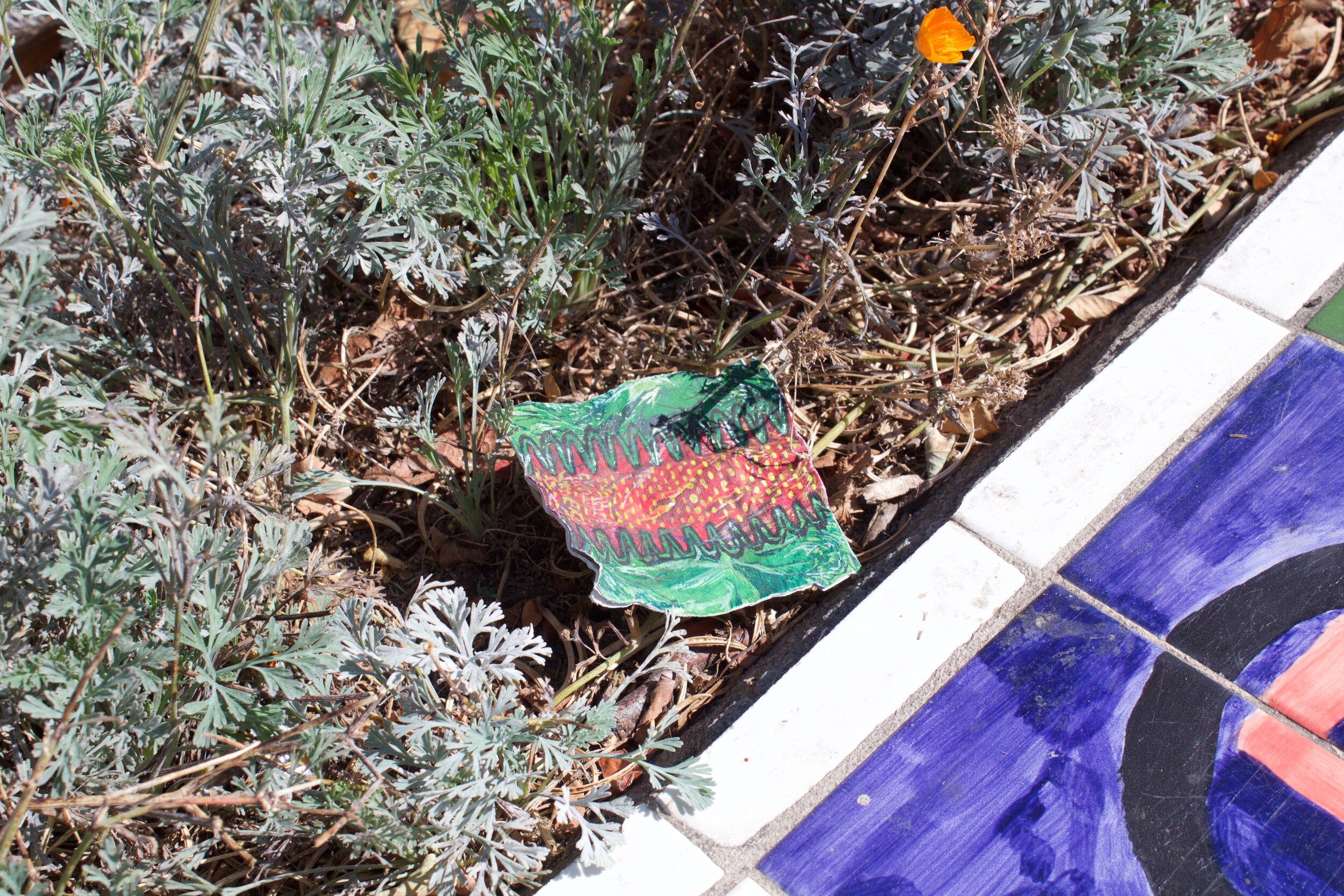


The first seed bomb - the Pabst Blue Ribbon Bottle Cap - I placed in the tree planter of the parklet at International and 35th. It’s a tiny wisp of accessible space with an El Camino Real marker bell and a few neat community mosaics. The second and third - the Strawberry Hard Candy wrapper and the Miller High Life Bottle Cap - went at opposite ends of the L-shaped Cesar Chavez Park. The wrapper in the tree planter near the entrance on Foothill Blvd, the bottle cap in the community garden near the entrance on 38th.
While time has yet to tell, my theory is that a neglected planter bed can isolate for some of the soil variables that may have hampered prior sprouting. Water is still an issue of course, but others like soil contamination or subsoil/clay soil are less so. Someone wanted to plant here, after all, so it stands to reason that enough factors hospitable to plant life are in play.
LESSONS LEARNED 1) Urban gardening is challenging. 2) Using gardening best practices isn’t cheating, it’s setting your seeds up for success.




